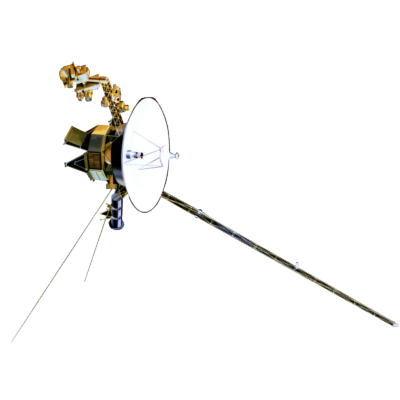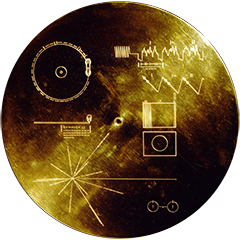Voyager LECP Data Analysis Handbook
Data File Descriptions
Master Rate (Tape) File Descriptions
Appendix A
LECP VIM/Cruise-5A Science Record on EDR
| Standard Header | Subheader | Data Block | 20 MF |
| 120 16-bit words | 2 words | 160 words | 3.2 minutes = 192 sec |
| 1 | 121 | 123 | 283 |
LECP VIM/Cruise-5A Data in Science Record on EDR
| P(7:0) | P | P | P | P | P | P | P | P | P | 1 | 2 | 3 | 4 | 5 | 6 | |
| 8 | 9 | P | P | P | P | P | P | P | P | P | P | 1 | 2 | 3 | 4 | |
| 5 | 6 | 8 | 9 | P | P | P | P | P | P | P | P | P | P | P | 1 | |
| 2 | 3 | 4 | 5 | 6 | 8 | 9 | 7 | 10 | 11 | 12 | 13 | 15 | 16 | 17 | P | P(39:8) |
| Split record here |
P = PHA (40 bits = 5 bytes)
# = Rate Group (40 bits = 4 10-bit rates). See LECP
Rate Groups, Far Encounter and Cruise Modes, for
definition.
20 minor frames of 16 bytes each cover 3.2 minutes = 102
seconds of data = 4 MOD60
32 Rate groups, 32 PHA but the last PHA straddles a record
boundary: the final 8 bits of a PHA readout from the
previous record occur first.
320 bytes per record
LECP VIM/Cruise 5 Data Map
| P | P | P | P | P | P | P | P | P | P | 1 | 2 | 3 | 4 | 5 | 6 |
| 8 | 9 | P | P | P | P | P | P | P | P | P | P | 1 | 2 | 3 | 4 |
| 5 | 6 | 8 | 9 | P | P | P | P | P | P | P | P | P | P | P | 1 |
| 2 | 3 | 4 | 5 | 6 | 8 | 9 | 7 | 10 | 11 | 12 | 13 | 15 | 16 | 17 | P |
LECP VIM/Cruise-5A Data Present Indicators in Standard Header
| Word (16-bit) | 37 | 38 | 39 | 40 | ||||||||||||
| Word (32-bit) 19 | MF1 | 2 | 3 | 4 | 5 | 6 | 7 | 8 | 9 | 10 | 11 | 12 | ||||
| Word (32-bit) 21 | 13 | 14 | 15 | 16 | 17 | 18 | 19 | 20 | ||||||||
| 41 | 42 | 43 | 44 | |||||||||||||
Word
numbers start at 1.
Data Present Indicators are 4 bits each for 20 minor frames
= 0000 if data present, = 1111 if data not present.
Do not swap these bytes and they will be in correct order.
Each minor frame applies to 128 bits or 16 bytes of LECP
data.
Next: Appendix B
Return to MRT main page.
Return to Data File Descriptions main page.
Return to Voyager
LECP Data Analysis Handbook Table of Contents.
Return to Fundamental
Technologies Home Page.
Updated 8/9/19, Cameron Crane
VOYAGER 1 ELAPSED TIME
*Since official launch
September 5, 1977, 12:56:00:00 UTC
VOYAGER 2 ELAPSED TIME
*Since official launch
August 20, 1977, 14:29:00:00 UTC
QUICK FACTS
Mission Duration: 40+ years have elapsed for both Voyager 1 and Voyager 2 (both are ongoing).
Destination: Their original destinations were Saturn and Jupiter. Their current destination is interstellar space.



